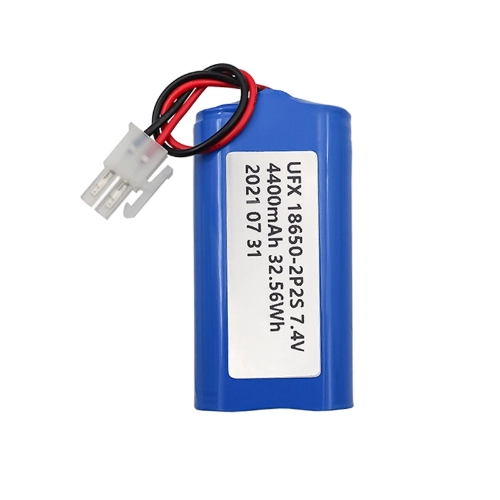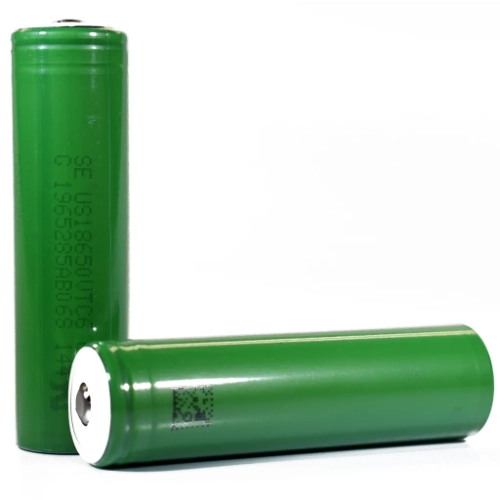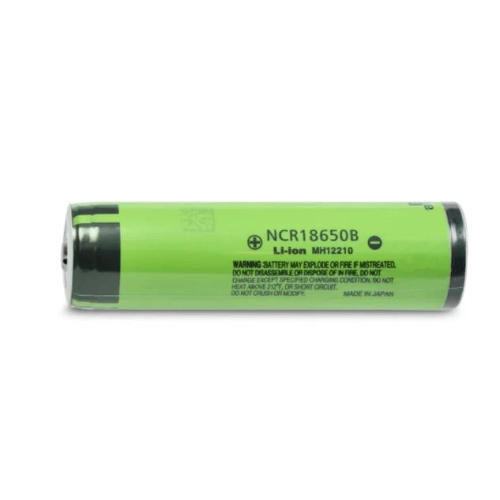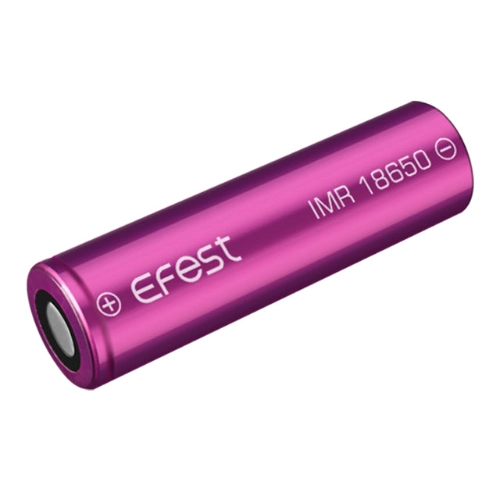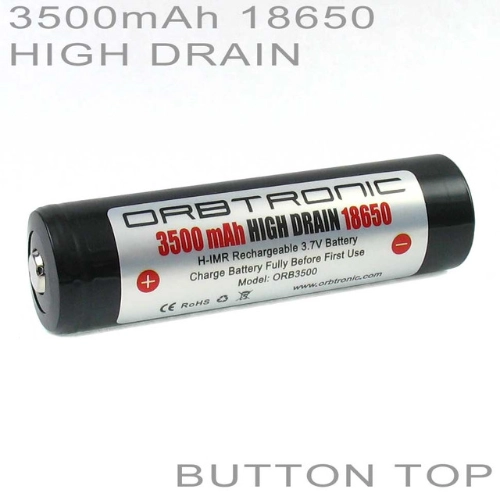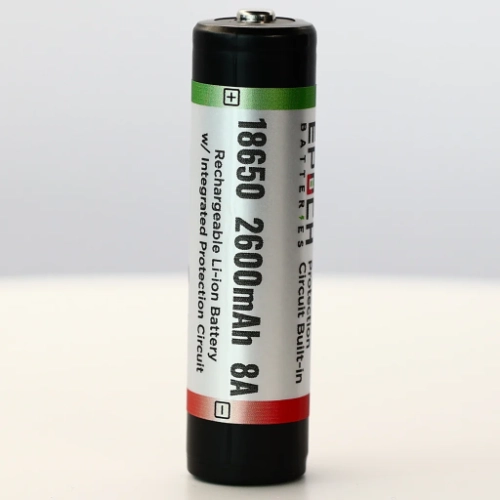18650 button top batteries are famous for their stability and applicability in different gadgets. They are handy in flashlights, portable devices, or other customized electronics; their performance cannot be paralleled.
Here, you will learn why 18650 button-top batteries are special and which ones are worthy of buying.
Part 1. What is an 18650 button top battery?
An 18650 button-top battery design makes fitting into devices requiring a protruding contact point easier. The dimensions are generally 18mm in diameter and 65mm in length, where the “18650” name comes from.
Key Features:
- High Capacity: Usually ranging from 2000mAh to over 3500mAh.
- Rechargeable: Designed for multiple charging cycles.
- Long Shelf Life: Retains charge well when not in use.
- Safety Features: Often includes protection circuits to prevent overcharging.
- Compatibility: Fits in a wide range of devices due to its raised terminal.
Part 2. Top 10 18650 button top batteries
1. Ufine 7.4 V 4400mAh 18650 Battery Pack
Specifications:
- Capacity: 4400mAh
- Nominal Voltage: 7.4V
- Configuration: 2S2P
- Max Charge Current: 4400mA
- Operating Temp: -20°C to 60°C
Pros:
- High capacity ensures long-lasting performance
- Reliable protection against overcharges and short-circuits
- Supports a wide temperature range, perfect for varied environments
- Ideal for both personal and industrial applications
- Long cycle life enhances cost-effectiveness
Cons:
- Slightly heavier at 200g
- 100 cycles might limit longevity for heavy-duty applications
2. Samsung INR18650-30Q Battery
Specifications:
- Capacity: 3000mAh
- Nominal Voltage: 3.6V
- Max Discharge: 15A
- Rechargeable: Yes
- Dimensions: 18.42mm x 66.64mm
Pros:
- Strong 3000mAh capacity for long-lasting use
- 15A continuous discharge supports high-drain devices
- Reliable button-top design for flashlights and doorbells
- Rechargeable for eco-friendly use
- Global shipping available
Cons:
- Slightly longer than standard 18650 cells
- Not suited for e-cigarettes or vapes
3. LG MJ1 18650 Battery
Specifications:
- Capacity: 3500mAh
- Nominal Voltage: 3.64V
- Max Discharge Current: 5A
- Rechargeable: Yes (400+ cycles)
- Protection Circuit: Yes
Pros:
- High capacity ensures longer runtimes
- Built-in protection for safety in high-drain devices
- Ideal for flashlights and household electronics
- Rechargeable with a long shelf life
- The top design fits well on multiple devices
Cons:
- Max discharge limited to 5A
- It is slightly more expensive for high-capacity
4. Sony VTC6 Battery
Specifications:
- Capacity: 3000mAh
- Nominal Voltage: 3.6V
- Max Discharge Current: 15A
- Rechargeable: Yes
- Dimensions: 18.5mm x 67.1mm
Pros:
- High 15A discharge rating for demanding devices
- Excellent balance between capacity and power output
- Durable design for high-drain applications
- Ideal for power-hungry flashlights and battery packs
- Reliable button top ensures compatibility with various devices
Cons:
- Slightly longer than standard 18650 cells
- Unprotected, requiring careful handling
5. Panasonic NCR18650B Battery
Specifications:
- Capacity: 3350mAh
- Nominal Voltage: 3.6V
- Max Discharge Current: 5A (PCB limit)
- Protection Circuit: Yes, PCB
- Dimensions: 18.9mm x 69.41mm
Pros:
- High capacity, great for long runtimes
- Built-in protection circuit prevents overcharging and short-circuiting
- Reliable for power-hungry devices with moderate discharge needs
- Rechargeable with a long lifespan
- Ideal for flashlights, medical equipment, and other high-drain electronics
Cons:
- Slightly larger than standard 18650 cells
- Lower discharge current compared to high-drain models
6. Sanyo NCR18650GA Battery
Specifications:
- Capacity: 3500mAh
- Nominal Voltage: 3.6V
- Discharge End Voltage: 2.5V
- Max continuous discharge: 10A
- Dimensions: 66.5mm x 18.5mm
Pros:
- High capacity offers extended runtime
- Supports 10A continuous discharge, suitable for high-drain devices
- Rechargeable and long-lasting, ideal for power-demanding electronics
- The button top makes it compatible with many devices
- Compact and lightweight, enhancing portability
Cons:
- Slightly larger than standard 18650 cells
- Not as high-drain as other models
7. Efest IMR18650 Battery
Specifications:
- Capacity: 3500mAh
- Nominal Voltage: 3.7V
- Max continuous discharge: 20A
- Charging voltage: 4.2V
- Dimensions: 18.6mm (D) x 65.2mm (L)
Pros:
- Perfect for high-drain devices
- Large 3500mAh capacity for longer runtimes
- The button top ensures compatibility with various devices
- Rechargeable and durable with multiple cycles
Cons:
- It may not fit in devices requiring flat-top batteries
- Heavier than lower-capacity alternatives
8. Orbtronic 18650 Battery
Specifications:
- Capacity: 3400mAh
- Voltage: 3.7V
- Type: Li-Ion
- Dimensions: 18mm x 65mm
- Weight: 1.6 ounces
Pros:
- High capacity of 3400mAh for extended runtimes
- Protected circuit for enhanced safety against overcharge/discharge
- Button top design ensures compatibility with various devices
- Lightweight and portable
Cons:
- Larger size might not fit all battery compartments
- Slightly higher price compared to unprotected cells
9. Basen 18650 Battery
Specifications:
- Capacity: 3100mAh
- Nominal Voltage: 3.7V
- Max continuous discharge: 40A
- Type: Li-Ion
- Dimensions: Standard 18650 size
Pros:
- The high discharge rate of 40A for demanding applications
- 3100mAh capacity provides substantial runtime
- The flat top design allows for versatile use in various devices
- Li-Ion chemistry ensures stable and reliable performance
Cons:
- Requires a compatible adapter for use with devices designed for flat-top batteries
- Higher discharge rates may reduce the overall battery lifespan
10. Epoch 18650 2600mAh 8A
Specifications:
- Capacity: 2600mAh
- Continuous Discharge Rating: 8A
- Nominal voltage: 3.7V
- Maximum voltage: 4.2V
- Dimensions: 18.35mm x 70.05mm
Pros:
- Protected with overcharge and over-discharge safety features
- Ideal for moderate-drain devices due to 8A discharge rate
- Rechargeable for repeated use
- Compatible with devices requiring button-top batteries
- Compact design with reliable Epoch build quality
Cons:
- Longer than standard 18650 batteries (70mm) may not fit all devices
- Lower capacity compared to higher-end models (2600mAh)
Part 3. How to choose the right 18650 button top battery?
Here are some tips on choosing the right 18650 button top battery:
- Capacity: You should always choose a battery according to the requirements for usage. On the other hand, the high-capacity battery has a long power backup, but charging or discharging is faster for energy-intensive products.
- Voltage consistency: Keep battery voltage constant while discharging throughout its discharge cycle.
- Brand reliability: You ideally should stick to well-seasoned companies such as Ufine, Panasonic, or Samsung.
- Protection circuit: Select batteries with added safety measures to avoid overheating, short-circuiting, and overcharging.
- Intended use: When choosing a battery to power a flashlight, look for the higher discharge rates.
Part 4. FAQs
-
What is the difference between flat top and button top 18650 batteries?
Flat-top batteries have a flat positive terminal. Button top batteries, with their raised terminal. -
Will a flat top 18650 battery work in a flashlight?
If the flashlight’s design accommodates flat-top batteries, they will work. -
What is the highest capacity of an 18650 flat-top battery?
The highest capacity typically is around 3600mAh. -
What battery can I use instead of an 18650 flat-top battery?
If your device allows it, consider using 21700 batteries. Another alternative is the 26650 for applications. -
What is better than an 18650 flat-top battery?
For those seeking more power, 21700 or 20700 cells offer higher capacities.
Related Tags:
More Articles

Aluminum Air Battery Design: Materials, Assembly & Efficiency Tips
An aluminum air battery uses aluminum and air to generate power. Learn its materials, assembly steps, and tips to boost energy output and efficiency.
7 Advantages of a Heated Lithium Battery in Cold Climates
Looking to power batteries in freezing temps? Heated lithium batteries excel in cold climates. Here are 7 key benefits and how they work.
How to Choose the Best Floor Scrubber Battery for Commercial Cleaning?
Selecting the ideal floor scrubber battery ensures a long runtime, rapid charging, and minimal maintenance for efficient commercial cleaning operations.
Battery for Blower vs Battery for Leaf Vacuum: Which One Should You Choose?
Battery for blower vs leaf vacuum—learn the key differences in power, fit, and runtime to choose the right battery for your outdoor tool needs.
How to Choose the Right Battery for Blower?
Choosing the right blower battery? Consider voltage, capacity, chemistry & usage. This guide helps match the best battery for peak performance.
